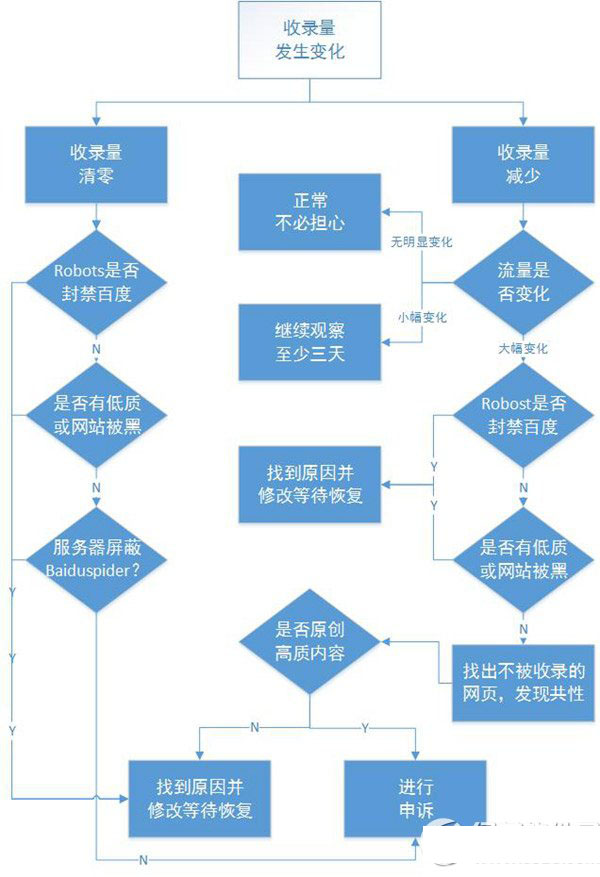深入理解MongoDB的复合索引
为什么需要索引?
当你抱怨MongoDB集合查询效率低的时候,可能你就需要考虑使用索引了,为了方便后续介绍,先科普下MongoDB里的索引机制(同样适用于其他的数据库比如mysql)。
mongo-9552:PRIMARY> db.person.find()
{ "_id" : ObjectId("571b5da31b0d530a03b3ce82"), "name" : "jack", "age" : 19 }
{ "_id" : ObjectId("571b5dae1b0d530a03b3ce83"), "name" : "rose", "age" : 20 }
{ "_id" : ObjectId("571b5db81b0d530a03b3ce84"), "name" : "jack", "age" : 18 }
{ "_id" : ObjectId("571b5dc21b0d530a03b3ce85"), "name" : "tony", "age" : 21 }
{ "_id" : ObjectId("571b5dc21b0d530a03b3ce86"), "name" : "adam", "age" : 18 }
当你往某各个集合插入多个文档后,每个文档在经过底层的存储引擎持久化后,会有一个位置信息,通过这个位置信息,就能从存储引擎里读出该文档。比如mmapv1引擎里,位置信息是『文件id + 文件内offset 』, 在wiredtiger存储引擎(一个KV存储引擎)里,位置信息是wiredtiger在存储文档时生成的一个key,通过这个key能访问到对应的文档;为方便介绍,统一用pos(position的缩写)来代表位置信息。
什么是复合索引?
复合索引,即Compound Index,指的是将多个键组合到一起创建索引,这样可以加速匹配多个键的查询。不妨通过一个简单的示例理解复合索引。
students集合如下:
db.students.find().pretty()
{
"_id" : ObjectId("5aa7390ca5be7272a99b042a"),
"name" : "zhang",
"age" : "15"
}
{
"_id" : ObjectId("5aa7393ba5be7272a99b042b"),
"name" : "wang",
"age" : "15"
}
{
"_id" : ObjectId("5aa7393ba5be7272a99b042c"),
"name" : "zhang",
"age" : "14"
}
在name和age两个键分别创建了索引(_id自带索引):
db.students.getIndexes()
[
{
"v" : 1,
"key" : {
"name" : 1
},
"name" : "name_1",
"ns" : "test.students"
},
{
"v" : 1,
"key" : {
"age" : 1
},
"name" : "age_1",
"ns" : "test.students"
}
]
当进行多键查询时,可以通过explian()分析执行情况(结果仅保留winningPlan):
db.students.find({name:"zhang",age:"14"}).explain()
"winningPlan":
{
"stage": "FETCH",
"filter":
{
"name":
{
"$eq": "zhang"
}
},
"inputStage":
{
"stage": "IXSCAN",
"keyPattern":
{
"age": 1
},
"indexName": "age_1",
"isMultiKey": false,
"isUnique": false,
"isSparse": false,
"isPartial": false,
"indexVersion": 1,
"direction": "forward",
"indexBounds":
{
"age": [
"[\"14\", \"14\"]"
]
}
}
}
由winningPlan可知,这个查询依次分为IXSCAN和FETCH两个阶段。IXSCAN即索引扫描,使用的是age索引;FETCH即根据索引去查询文档,查询的时候需要使用name进行过滤。
为name和age创建复合索引:
db.students.createIndex({name:1,age:1})
db.students.getIndexes()
[
{
"v" : 1,
"key" : {
"name" : 1,
"age" : 1
},
"name" : "name_1_age_1",
"ns" : "test.students"
}
]
有了复合索引之后,同一个查询的执行方式就不同了:
db.students.find({name:"zhang",age:"14"}).explain()
"winningPlan":
{
"stage": "FETCH",
"inputStage":
{
"stage": "IXSCAN",
"keyPattern":
{
"name": 1,
"age": 1
},
"indexName": "name_1_age_1",
"isMultiKey": false,
"isUnique": false,
"isSparse": false,
"isPartial": false,
"indexVersion": 1,
"direction": "forward",
"indexBounds":
{
"name": [
"[\"zhang\", \"zhang\"]"
],
"age": [
"[\"14\", \"14\"]"
]
}
}
}
由winningPlan可知,这个查询的顺序没有变化,依次分为IXSCAN和FETCH两个阶段。但是,IXSCAN使用的是name与age的复合索引;FETCH即根据索引去查询文档,不需要过滤。
这个示例的数据量太小,并不能看出什么问题。但是实际上,当数据量很大,IXSCAN返回的索引比较多时,FETCH时进行过滤将非常耗时。接下来将介绍一个真实的案例。
定位MongoDB性能问题
随着接收的错误数据不断增加,我们Fundebug已经累计处理3.5亿错误事件,这给我们的服务不断带来性能方面的挑战,尤其对于MongoDB集群来说。
对于生产数据库,配置profile,可以记录MongoDB的性能数据。执行以下命令,则所有超过1s的数据库读写操作都会被记录下来。
db.setProfilingLevel(1,1000)
查询profile所记录的数据,会发现events集合的某个查询非常慢:
db.system.profile.find().pretty()
{
"op" : "command",
"ns" : "fundebug.events",
"command" : {
"count" : "events",
"query" : {
"createAt" : {
"$lt" : ISODate("2018-02-05T20:30:00.073Z")
},
"projectId" : ObjectId("58211791ea2640000c7a3fe6")
}
},
"keyUpdates" : 0,
"writeConflicts" : 0,
"numYield" : 1414,
"locks" : {
"Global" : {
"acquireCount" : {
"r" : NumberLong(2830)
}
},
"Database" : {
"acquireCount" : {
"r" : NumberLong(1415)
}
},
"Collection" : {
"acquireCount" : {
"r" : NumberLong(1415)
}
}
},
"responseLength" : 62,
"protocol" : "op_query",
"millis" : 28521,
"execStats" : {
},
"ts" : ISODate("2018-03-07T20:30:59.440Z"),
"client" : "192.168.59.226",
"allUsers" : [ ],
"user" : ""
}
events集合中有数亿个文档,因此count操作比较慢也不算太意外。根据profile数据,这个查询耗时28.5s,时间长得有点离谱。另外,numYield高达1414,这应该就是操作如此之慢的直接原因。根据MongoDB文档,numYield的含义是这样的:
The number of times the operation yielded to allow other operations to complete. Typically, operations yield when they need access to data that MongoDB has not yet fully read into memory. This allows other operations that have data in memory to complete while MongoDB reads in data for the yielding operation.
这就意味着大量时间消耗在读取硬盘上,且读了非常多次。可以推测,应该是索引的问题导致的。
不妨使用explian()来分析一下这个查询(仅保留executionStats):
db.events.explain("executionStats").count({"projectId" : ObjectId("58211791ea2640000c7a3fe6"),createAt:{"$lt" : ISODate("2018-02-05T20:30:00.073Z")}})
"executionStats":
{
"executionSuccess": true,
"nReturned": 20853,
"executionTimeMillis": 28055,
"totalKeysExamined": 28338,
"totalDocsExamined": 28338,
"executionStages":
{
"stage": "FETCH",
"filter":
{
"createAt":
{
"$lt": ISODate("2018-02-05T20:30:00.073Z")
}
},
"nReturned": 20853,
"executionTimeMillisEstimate": 27815,
"works": 28339,
"advanced": 20853,
"needTime": 7485,
"needYield": 0,
"saveState": 1387,
"restoreState": 1387,
"isEOF": 1,
"invalidates": 0,
"docsExamined": 28338,
"alreadyHasObj": 0,
"inputStage":
{
"stage": "IXSCAN",
"nReturned": 28338,
"executionTimeMillisEstimate": 30,
"works": 28339,
"advanced": 28338,
"needTime": 0,
"needYield": 0,
"saveState": 1387,
"restoreState": 1387,
"isEOF": 1,
"invalidates": 0,
"keyPattern":
{
"projectId": 1
},
"indexName": "projectId_1",
"isMultiKey": false,
"isUnique": false,
"isSparse": false,
"isPartial": false,
"indexVersion": 1,
"direction": "forward",
"indexBounds":
{
"projectId": [
"[ObjectId('58211791ea2640000c7a3fe6'), ObjectId('58211791ea2640000c7a3fe6')]"
]
},
"keysExamined": 28338,
"dupsTested": 0,
"dupsDropped": 0,
"seenInvalidated": 0
}
}
}
可知,events集合并没有为projectId与createAt建立复合索引,因此IXSCAN阶段采用的是projectId索引,其nReturned为28338; FETCH阶段需要根据createAt进行过滤,其nReturned为20853,过滤掉了7485个文档;另外,IXSCAN与FETCH阶段的executionTimeMillisEstimate分别为30ms和27815ms,因此基本上所有时间都消耗在了FETCH阶段,这应该是读取硬盘导致的。
创建复合索引
没有为projectId和createAt创建复合索引是个尴尬的错误,赶紧补救一下:
db.events.createIndex({projectId:1,createTime:-1},{background: true})
在生产环境构建索引这种事最好是晚上做,这个命令一共花了大概7个小时吧!background设为true,指的是不要阻塞数据库的其他操作,保证数据库的可用性。但是,这个命令会一直占用着终端,这时不能使用CTRL + C,否则会终止索引构建过程。
复合索引创建成果之后,前文的查询就快了很多(仅保留executionStats):
db.javascriptevents.explain("executionStats").count({"projectId" : ObjectId("58211791ea2640000c7a3fe6"),createAt:{"$lt" : ISODate("2018-02-05T20:30:00.073Z")}})
"executionStats":
{
"executionSuccess": true,
"nReturned": 0,
"executionTimeMillis": 47,
"totalKeysExamined": 20854,
"totalDocsExamined": 0,
"executionStages":
{
"stage": "COUNT",
"nReturned": 0,
"executionTimeMillisEstimate": 50,
"works": 20854,
"advanced": 0,
"needTime": 20853,
"needYield": 0,
"saveState": 162,
"restoreState": 162,
"isEOF": 1,
"invalidates": 0,
"nCounted": 20853,
"nSkipped": 0,
"inputStage":
{
"stage": "COUNT_SCAN",
"nReturned": 20853,
"executionTimeMillisEstimate": 50,
"works": 20854,
"advanced": 20853,
"needTime": 0,
"needYield": 0,
"saveState": 162,
"restoreState": 162,
"isEOF": 1,
"invalidates": 0,
"keysExamined": 20854,
"keyPattern":
{
"projectId": 1,
"createAt": -1
},
"indexName": "projectId_1_createTime_-1",
"isMultiKey": false,
"isUnique": false,
"isSparse": false,
"isPartial": false,
"indexVersion": 1
}
}
}
可知,count操作使用了projectId和createAt的复合索引,因此非常快,只花了46ms,性能提升了将近600倍!!!对比使用复合索引前后的结果,发现totalDocsExamined从28338降到了0,表示使用复合索引之后不再需要去查询文档,只需要扫描索引就好了,这样就不需要去访问磁盘了,自然快了很多。
参考
总结
以上就是这篇文章的全部内容了,希望本文的内容对大家的学习或者工作具有一定的参考学习价值,如果有疑问大家可以留言交流,谢谢大家对潘少俊衡的支持。
版权声明
本文仅代表作者观点,不代表本站立场。
本文系作者授权发表,未经许可,不得转载。
本文地址:/shujuku/MongoDB/104775.html














